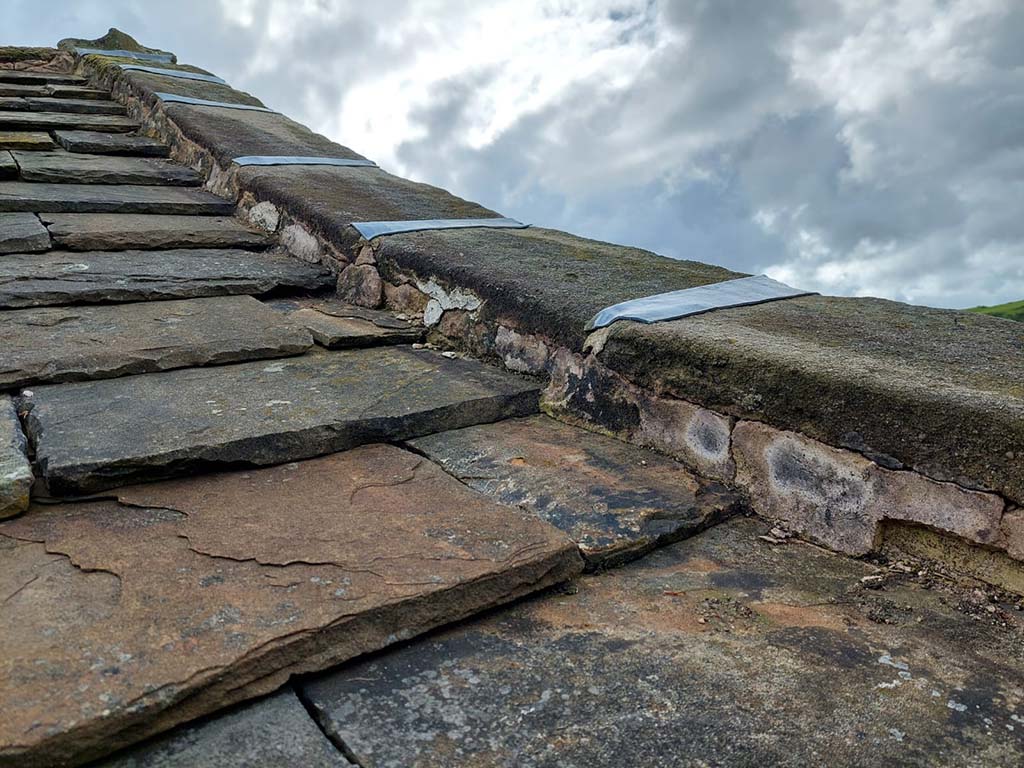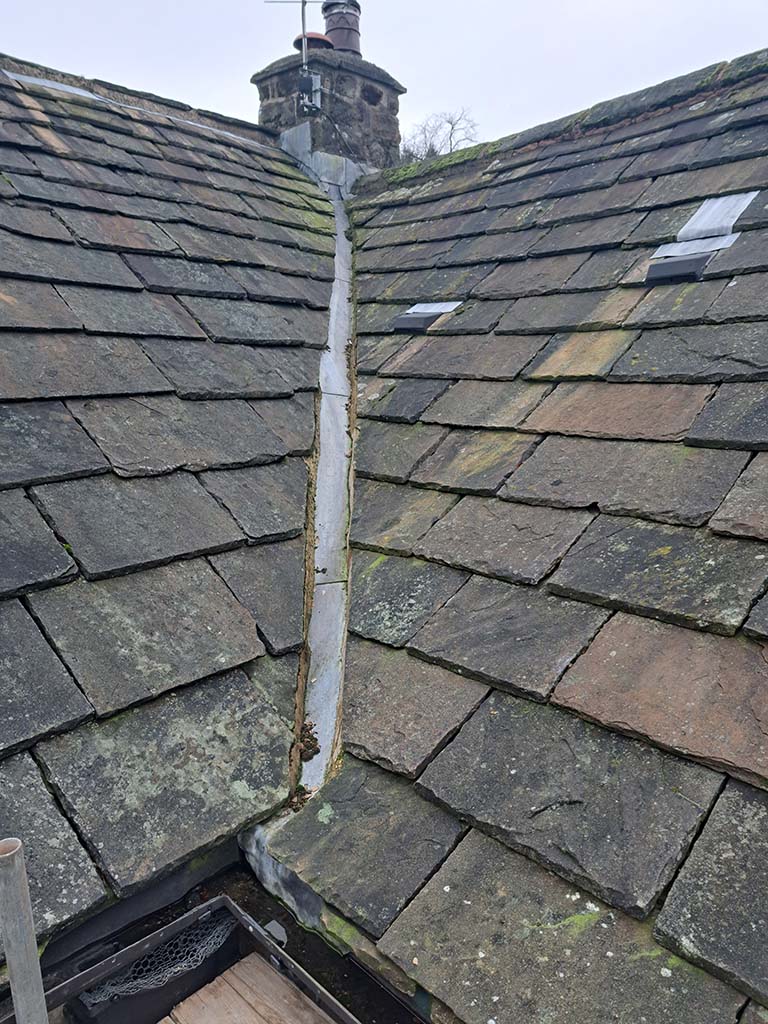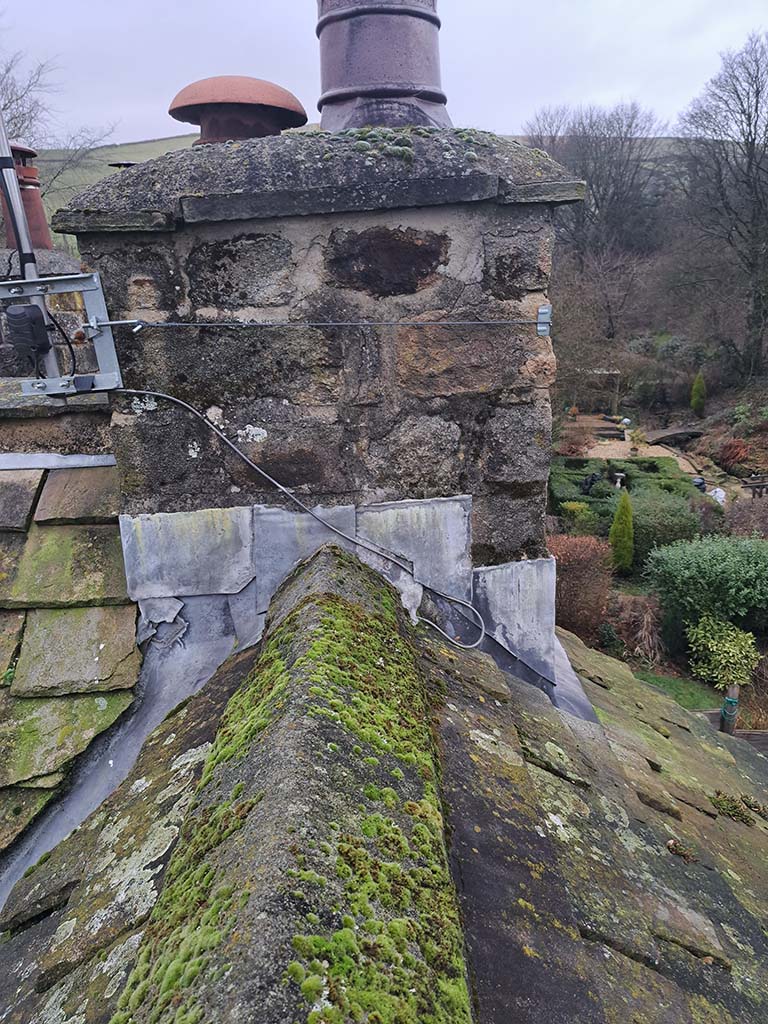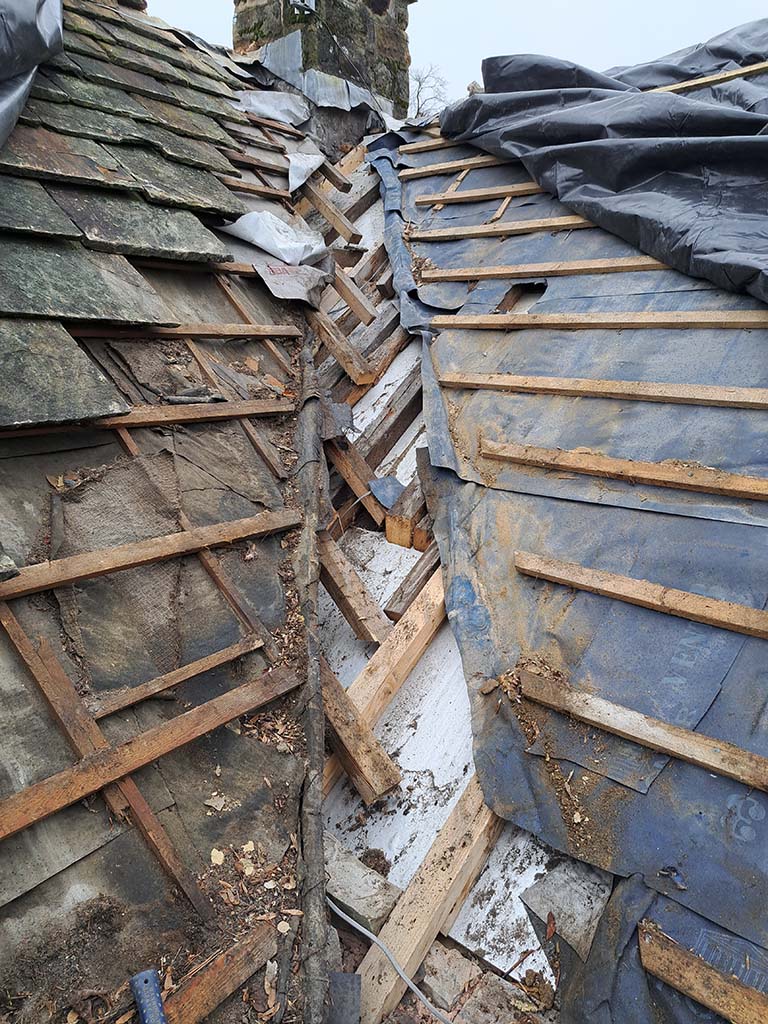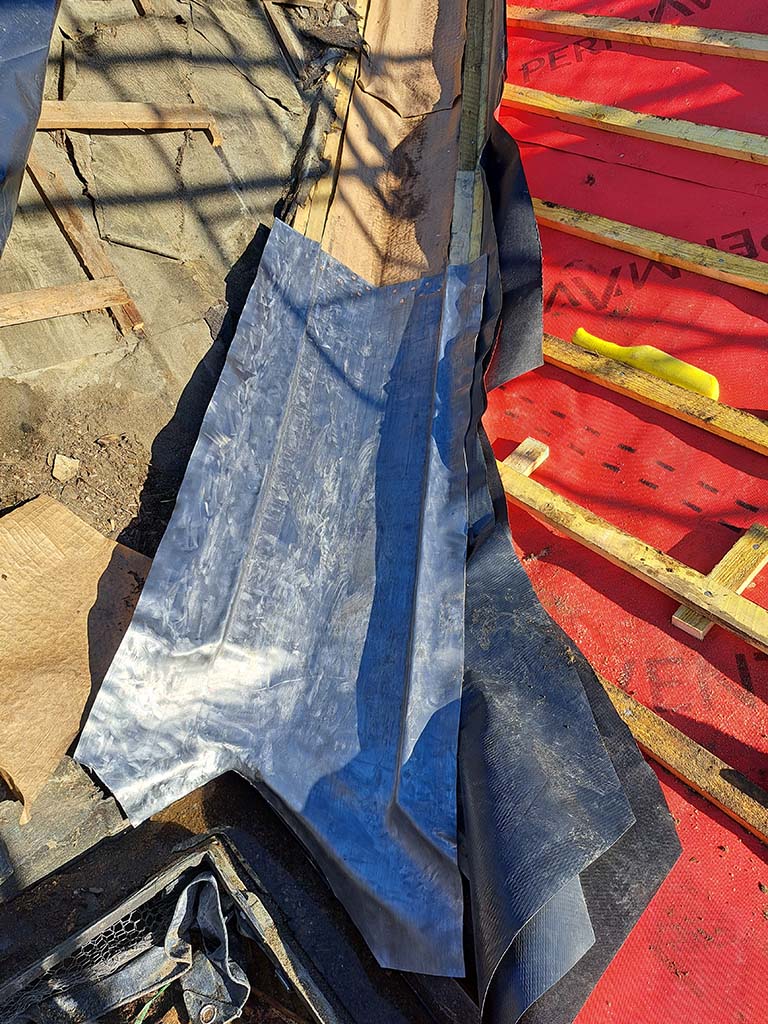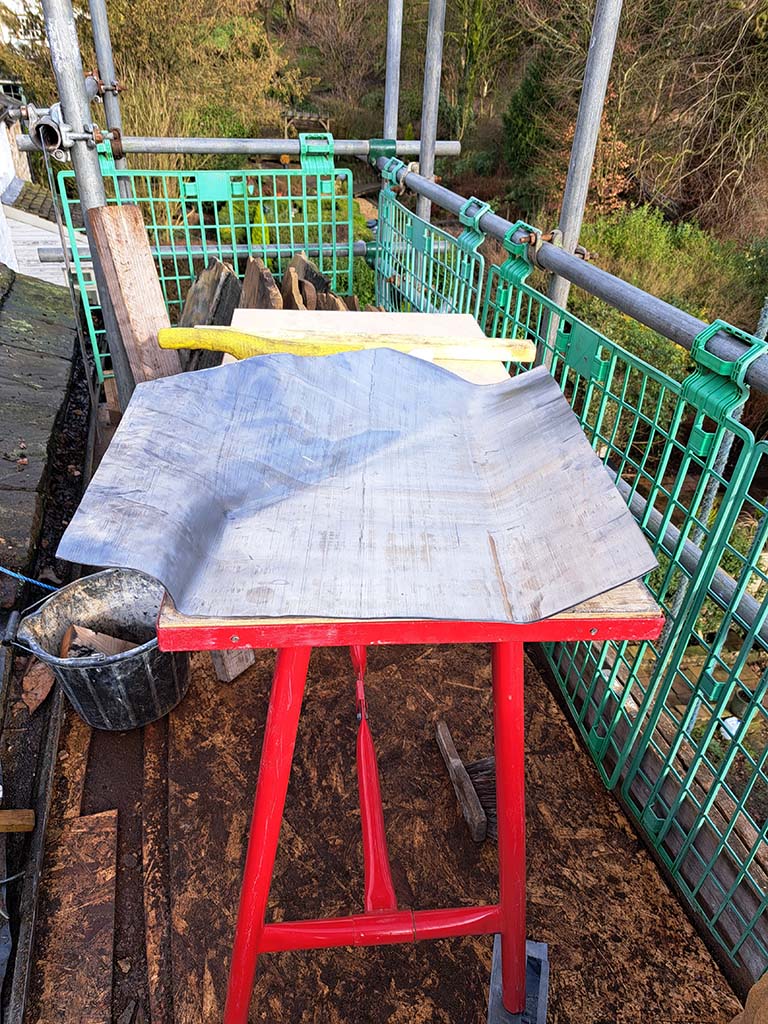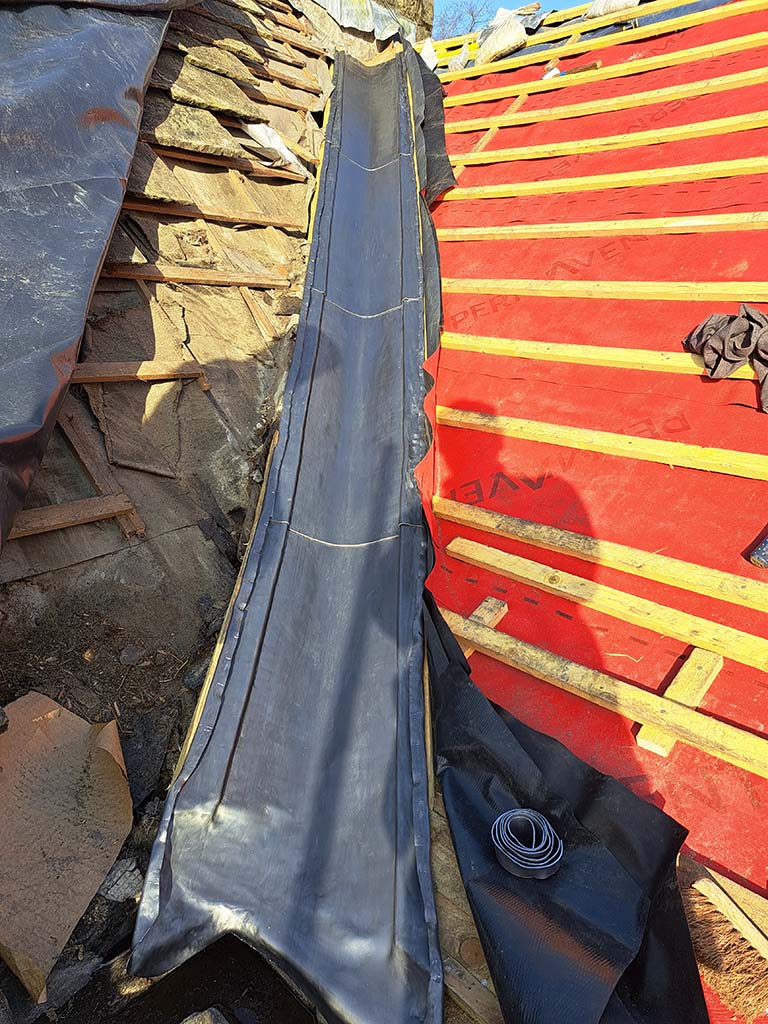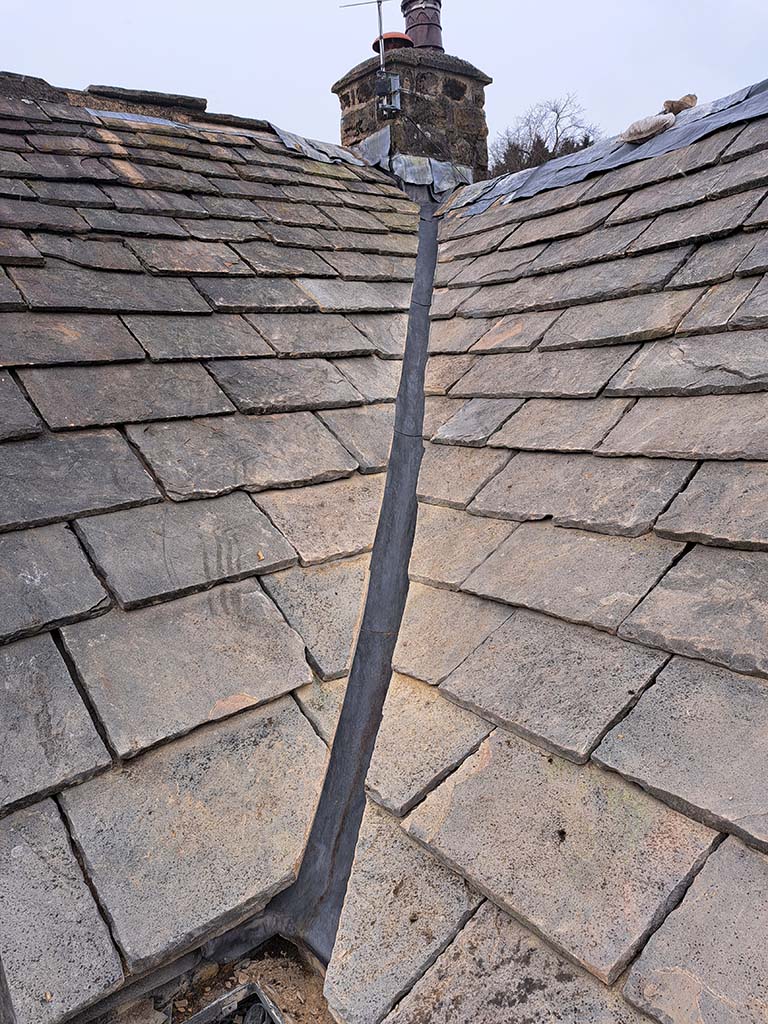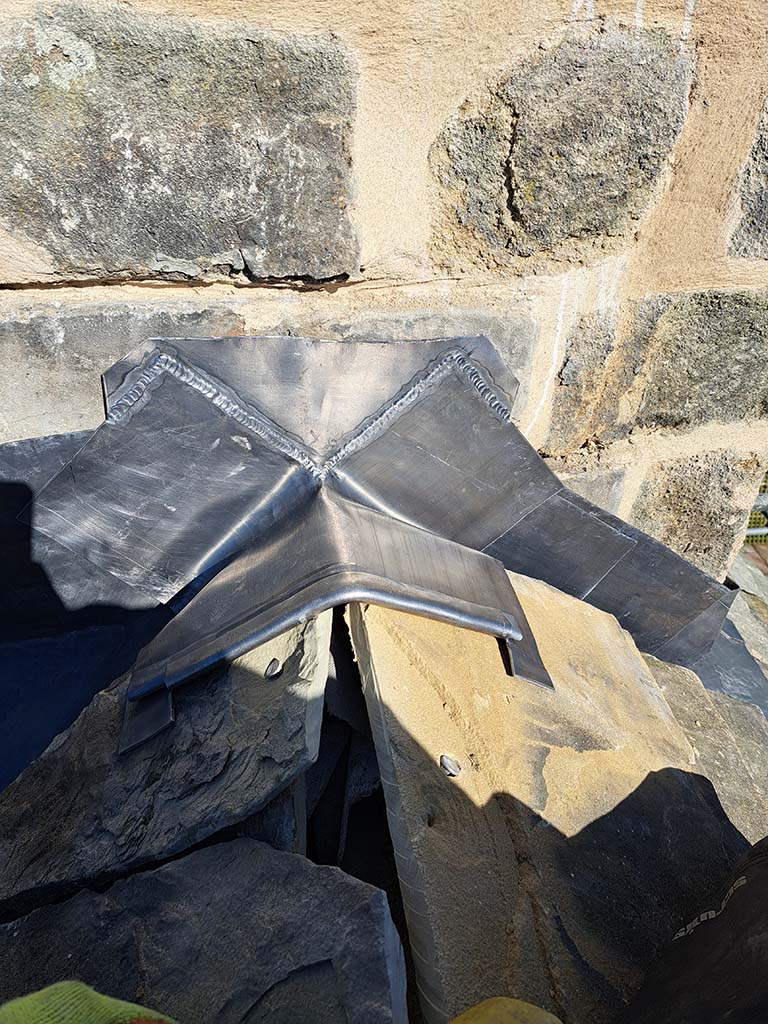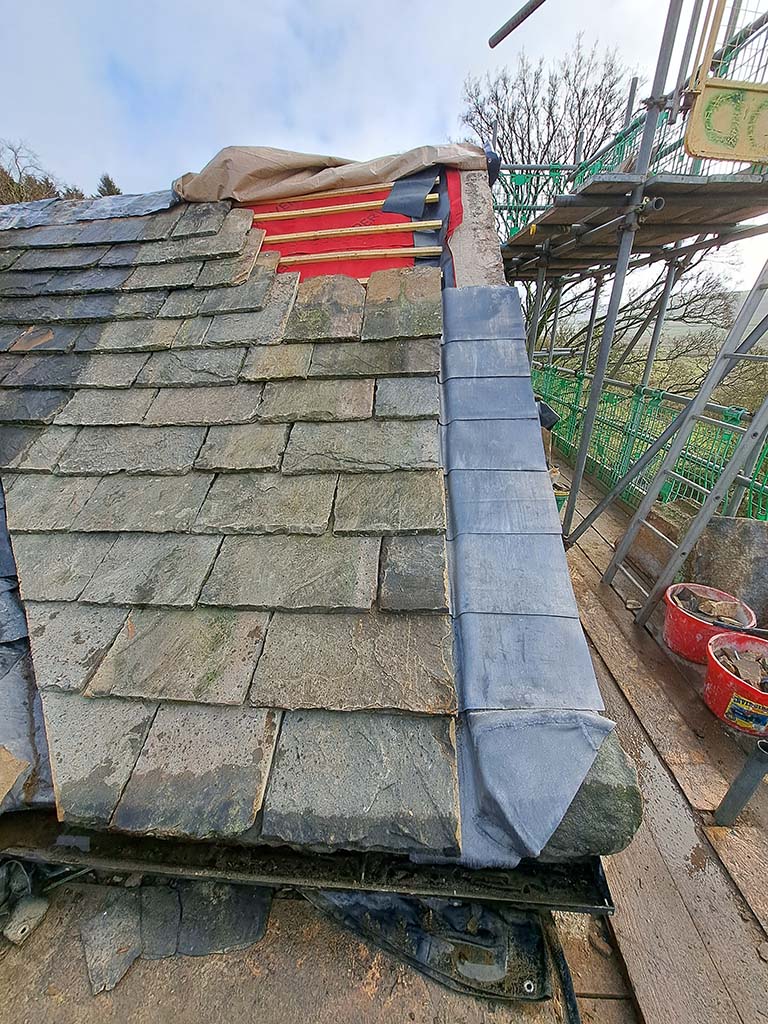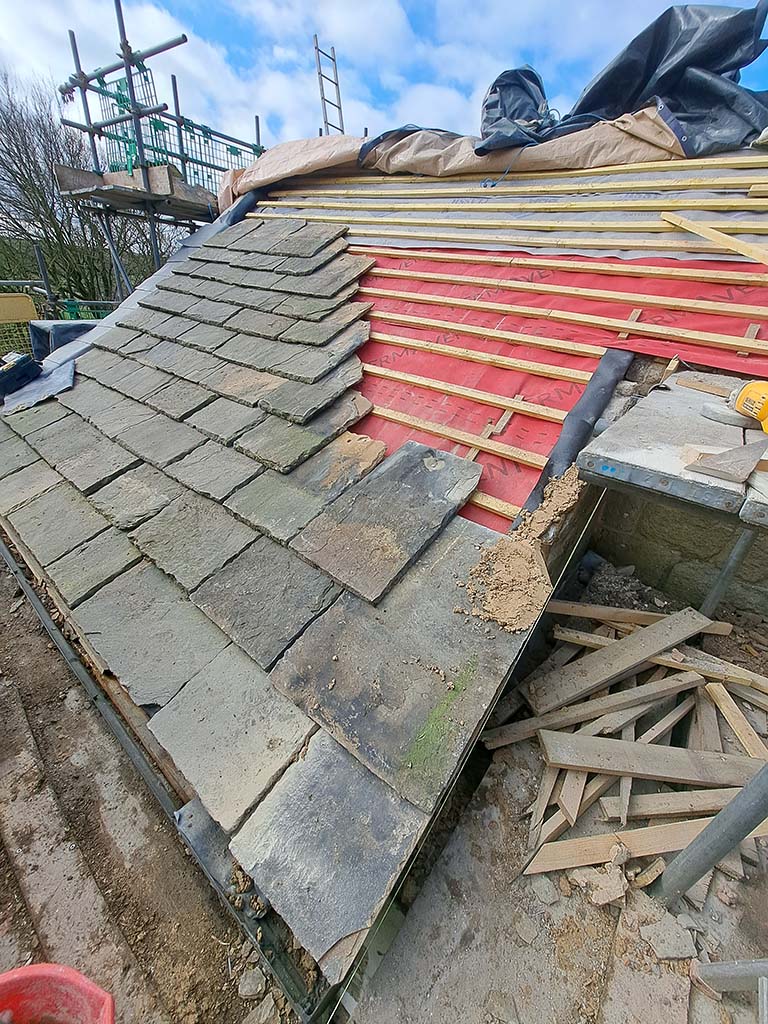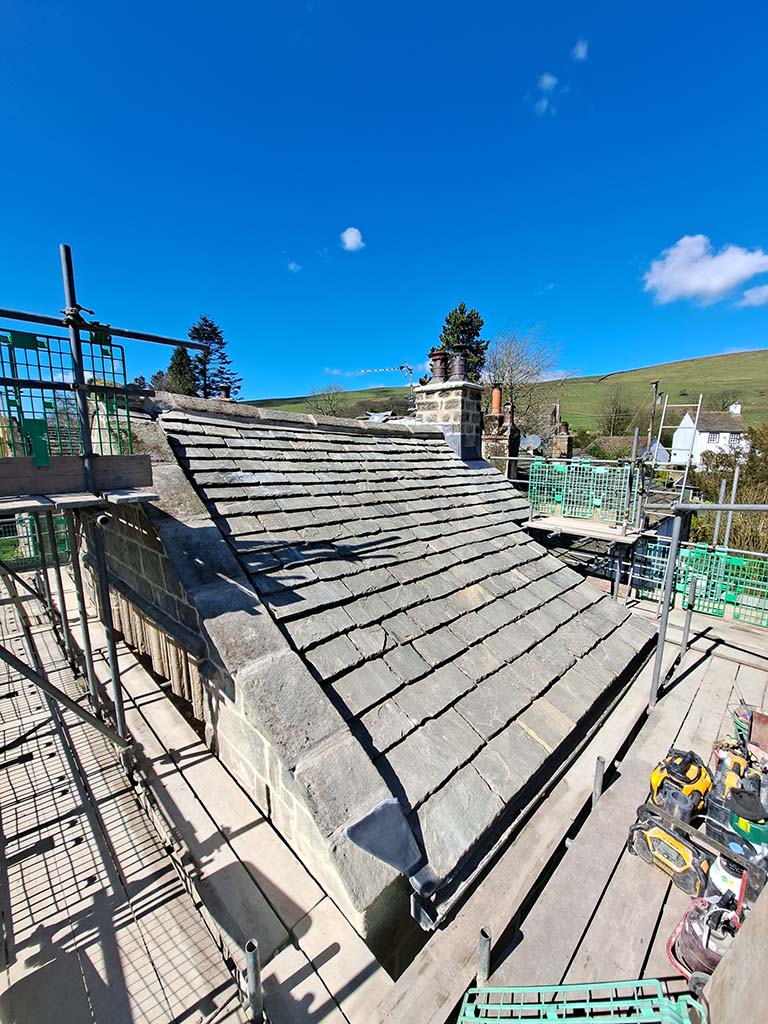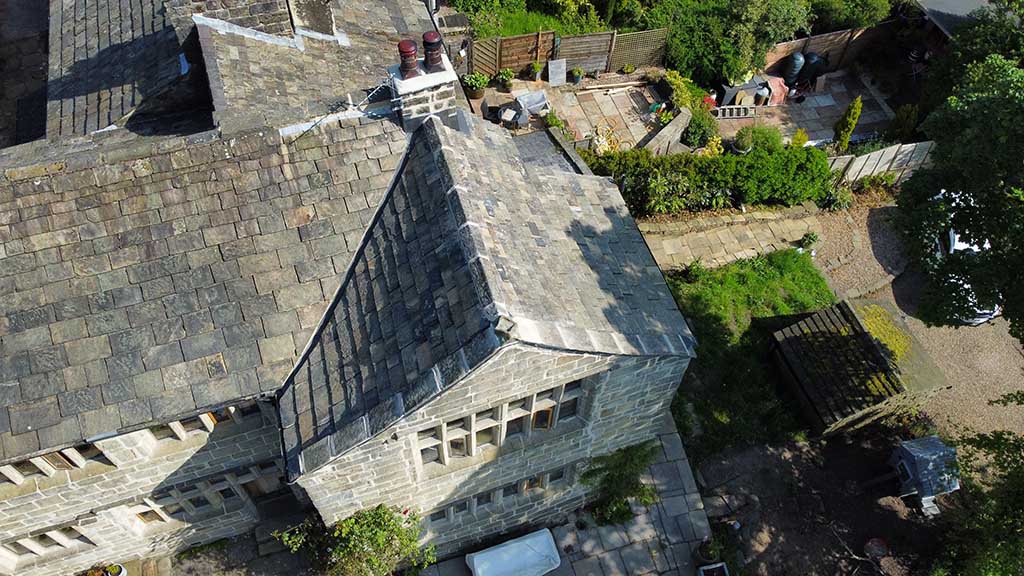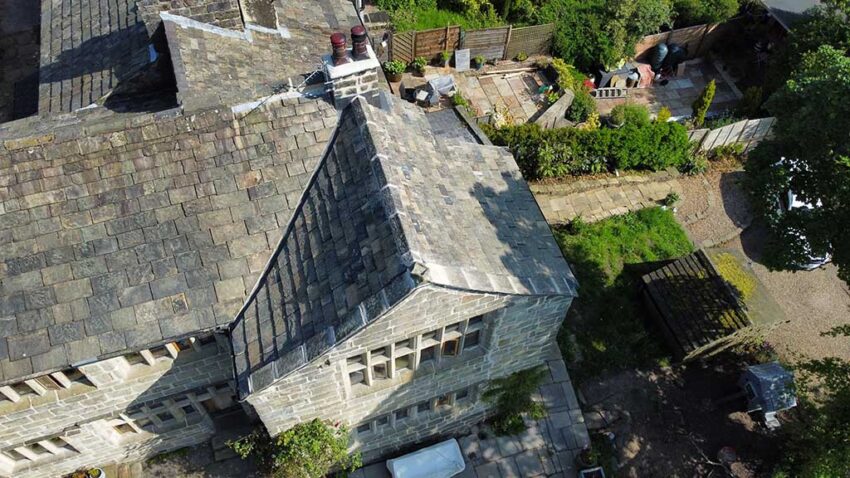Earlier this year we completed roofing works on a Grade II* Hall in Lancashire. The result of our assessment of water ingress investigations concluded that the lead valley required renewing to industry standards and leadwork was needed beneath the copings.
Lead Valley Gutter
The lead within the valley was too short to lap at the sides and had instead been pointed with thick cement. The cement was cracking and unbonding which resulted in rainwater flowing beneath the slates.
We stripped the existing and timber lined the gutter to create a hard surface for supporting the lead.
Oak repairs to the rafters were required due to the affected water damage.
A layer of building paper lined the pennyboard timbers of the new gutter in order to protect the lead for expansion. Leadwork was ‘bossed’ which is the method of shaping and forming the lead into complex areas or angles, without leaving tool marks or significantly affecting the lead thickness.
Coping Leadwork
Gable end copings were found to have been lead flashed at the joints, however best practice to prevent water penetrating would be to install a full lead course. By installing the lead over the stonework would save workload and costs, however it would change the appearance of the building.
The gritstone copings were carefully removed and cleaned of debris prior to reinstallation in their
previous positions. Only 1 coping was unsuitable therefore a replacement was carved by the stonemason. Consolidation to the wallhead is typically required when lifting copings, which meant that a layer of stone had to be rebed with lime mortar.
Once completed, the leadwork course could be installed with a runoff formed between the wallhead and slate soaker. A keystone at the base of the copings is not removed, therefore the lead is lapped over the top to prevent a weak point. The relaid copings were finally pointed in a lime mortar.
Reroofing and Ridges
The valley and coping works required an area of stone slate to be removed in order to install the
lead soakers beneath. For the relatively small section of roofing between these areas, it was prudent to address these works at the same time.
Water damage from the issues had affected this section of roof which benefited from Oak rafter
repairs, new battens and breathable felt. Further Oak work was required to create a kicker for the end slates which could direct water into the guttering.
The majority of these York Stone Slates were refitted after being carefully stacked and cleaned however, the opposite side of the wing roof had a number of stone slates that required handpicked reclaimed
replacements. Finally, the ridges could be bed onto a lime mix.
Chimney Overhaul
The chimney required new leadwork forming to standard as the existing appeared to be overlapping.
It had unfortunately been pointed with cement – which was failing along with the flaunching. We reflaunched (recapped) the chimney and repointed with a lime mix.
New lead flashings were installed, soakers (prior to reslating) along with a lead ridge piece (prior to
rebedding the ridges). The ridge piece was lead welded – which seals 2 pieces of lead together with
heated torch work.
